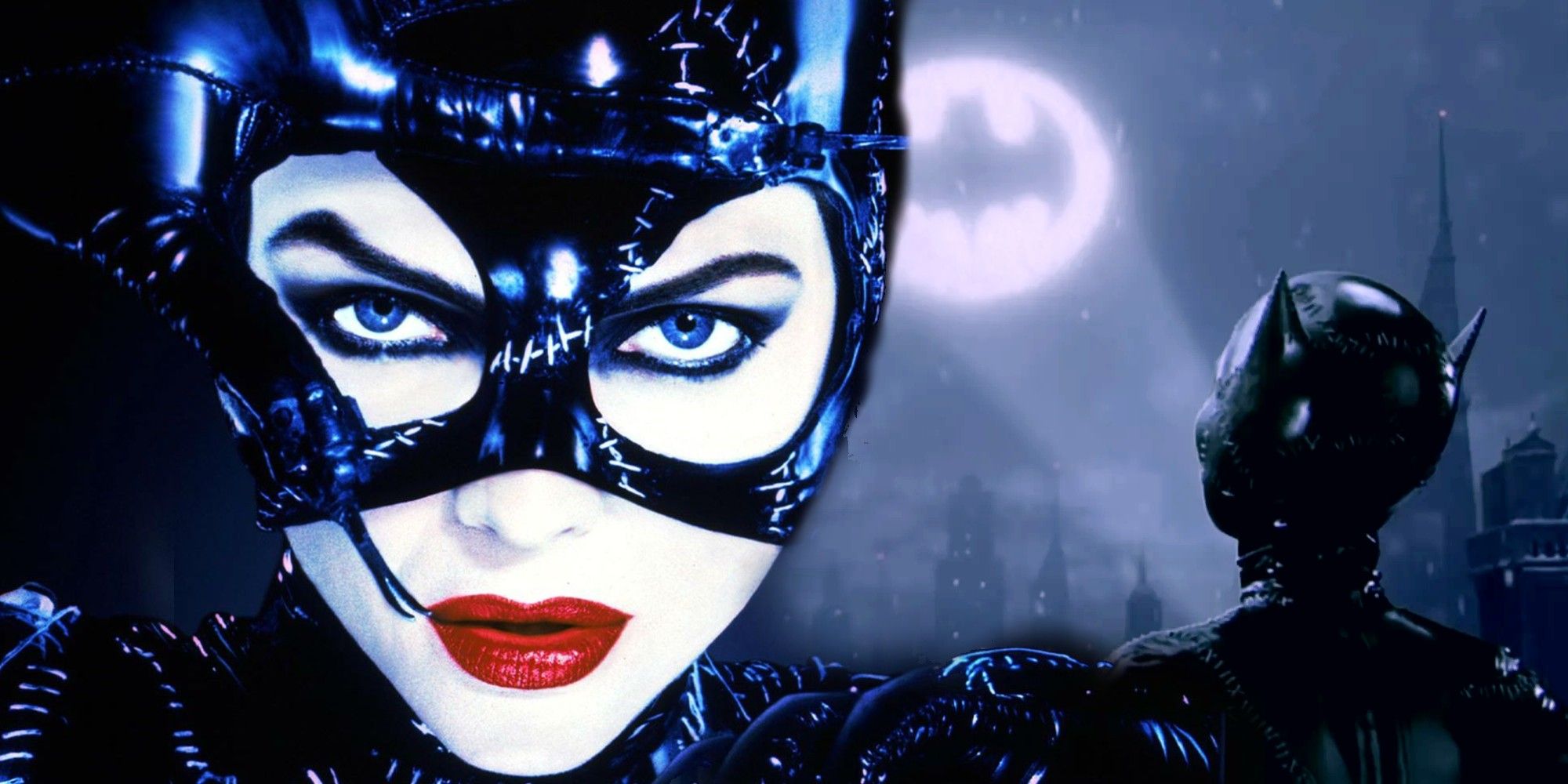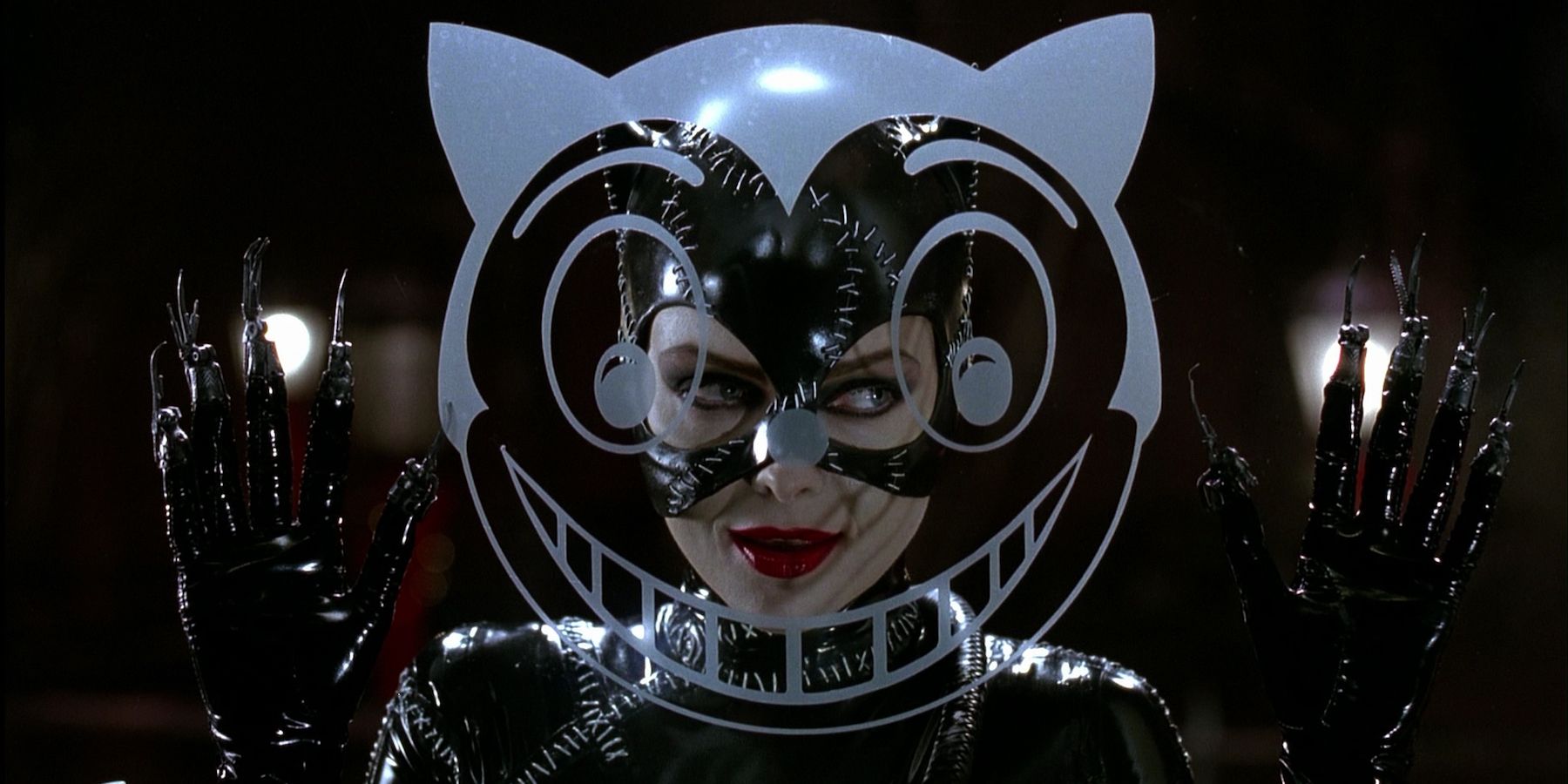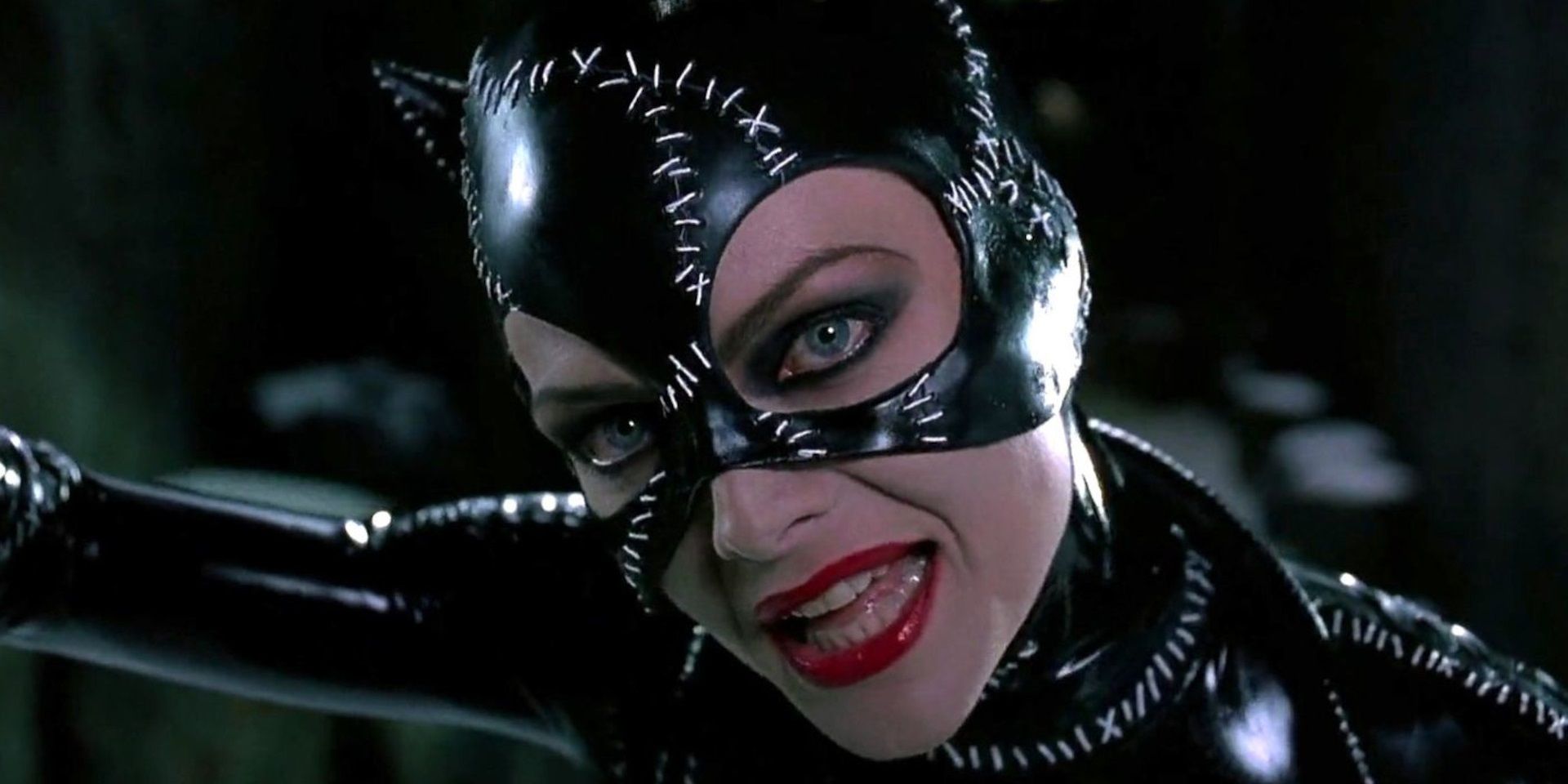Batman Returns has one of the most iconic comic book endings ever created. Tim Burton's Christmas-themed Batman sequel employed such potent iconography that it defined the Batman franchise and its characters for a generation. Batman Returns' memorable ending depicted the survival of Michelle Pfeiffer's showstopping Selina Kyle/Catwoman. This was, however, not the original ending for the movie, or the character. The original conclusion to Batman Returns was far more befitting of the character, despite what the studios thought.
As discussed in Shadows of the Bat: The Cinematic Saga of The Dark Knight (a 6-part documentary series from the anthology DVD special features) the ending for Batman Returns was a last-minute decision. One of the most recognizable images in cinematic history features an iconic recreation of the final scene of Batman, as played by Michael Keaton. Except in Batman Returns, it is Catwoman's profile gazing up at the bat-signal, across the gloomy Gotham cityscape. The dazzling final shot of the movie was added at Warner Bros. Studios' request. It reportedly cost $250,000 to film and features a body double standing in for Michelle Pfeiffer.
Batman Returns' Original Catwoman Ending Explained
The original ending for Batman Returns concluded with Bruce Wayne and Alfred driving through the snowy streets of Gotham. The clocks chime midnight on Christmas Day, with Danny DeVito's Penguin defeated. A brief scampering Catwoman-like shadow is glimpsed by Bruce Wayne who exits the vehicle, to find only one of Selina's cats instead. He takes in the feline, seemingly to retain a connection to the woman he loves, but cannot determine for certain if she survived. Originally the movie ended here, panning up through the imposing gothic skyscrapers to find the bat-signal.
The most notable difference between the Batman Returns' endings is the ambiguity surrounding whether Catwoman is still alive or not. The added scene confirms this, teasing us with the potential for Catwoman appearing in future movies. Without it, the only suggestions Selina survived are her disappearance and the fleeting shadow Bruce spotted. Interestingly, in Daniel Waters' script, Batman and Alfred actually have to brake to avoid hitting Selina's cat, who has sauntered into the road. It makes eye contact with a pensive Bruce Wayne who then simply continues his journey.
Why The Batman Returns Ending Changed
The decision to add the final shot depicting Catwoman on the rooftops was driven by two main reasons. Firstly, to lighten up Burton's bleak Christmas adventure, making it more palatable for children. And secondly, to open up the possibility of Catwoman returning to the Batman franchise. Confirming Catwoman's survival retains one of Batman Returns most well-received features, Michelle Pfeiffer's performance. Many claim Pfeiffer "stole the show" in Batman Returns, and the studio seemingly predicted it as such. The briefly teased potential would pay off, as Pfeiffer embodied the role so successfully that her own Catwoman spin-off was planned, with Tim Burton interested in directing.
After handing the reigns of Batman over to Joel Schumacher, a Catwoman spin-off was planned, with Burton, Pfeiffer, Waters, and producer Denise Di Novi all set to return from Batman Returns. The movie would have seen an amnesia-suffering Selina Kyle slinking through a Las Vegas-style metropolis confronting corrupt superheroes. Unfortunately, the project suffered a decade of delays due to key figures' work schedules and family lives. Ultimately the film evolved into the 2004 flop Catwoman starring Halle Berry, which only retained one member of the original Batman Returns dream team - producer Di Novi.
Catwoman's Original Batman Returns Ending Would've Been Better
The ambiguous nature of Batman Returns' original ending was far more befitting Selina Kyle. It matches Catwoman's cat-like elusiveness, never truly allowing anybody to grasp her or her whereabouts. Creating emotional distance and disallowing affection are traits often associated with cats and Catwoman, making the indeterminate, open-ended conclusion more appropriate for the evasive anti-hero. It also fits with the somber tone of Tim Burton's Batman films, making the ending as appropriately bleak as the expressionistic architecture.
Moreover, the uncertainty concerning Selina's fate deeply affects Batman. He is obviously pining for his lost love and has internalized much of the traumatic events regarding identity and the movie's themes of duality. Waters' script refers to him as removing his cowl and becoming "a moving mixture of Man and Superman." Batman has seemingly resolved his issues regarding whether he is Bruce Wayne or Batman - a theme later concluded in Schumacher's Batman Forever. Verifying that Selina is alive undermines this emotional and thematic resolution.
The final shot of Batman Returns is somewhat divisive. On the one hand, it contradicts the emotional journey Batman has undergone, Catwoman's elusive nature, and Burton's bleak vision. On the other, it might be the most beautiful shot of the movie, or any of the Caped Crusader's cinematic entries for that matter. The addition might make an otherwise perfect film slightly flawed, but it also provided one of Batman Returns most enduring images.




.jpg)